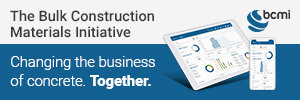 |
||||||||||||
|
||||||||||||
|
Association & Industry News
The Concrete Industry Management (CIM) program that has grown in scope and influence since its founding in 1996 is close to achieving another significant milestone by estabishing a foothold in the Upper Midwest region of the U.S. During a recent National Steering Committee meeting of the CIM Board of Directors, South Dakota State University (SDSU) was selected as the fifth university to host a CIM program and the first in the Upper Midwest. The school, based in Brookings, was chosen for a variety of key factors, including a strong commitment to establishing a CIM program by all levels of their administration; prior experience with public-private partnerships; outstanding laboratory and classroom facilities; favorable tuition rates; and strong support from state government agencies, private firms and SDSU alumni. The other four institutions that already feature CIM programs are California State University - Chico, Middle Tennessee State University, the New Jersey Institute of Technology and Texas State University. Once the agreement is formalized and ratified by the relevant parties, it is expected that SDSU will enroll its first CIM students in Fall 2022. The original configuration of the North Central Region included the states of Michigan, Illinois, Missouri, Wisconsin, Nebraska, Iowa, Minnesota, North Dakota and South Dakota. However, since SDSU allows students in contiguous states to pay in-state tuition, this expands student recruiting to Colorado, Wyoming and Montana. If your company has operations or if you have members of your associations in any of these 12 states, please let them know about the SDSU CIM program. Click here for the full announcement and contact Nicole Maher at nmaher@nrmca.org for more information.
Buildings
The Silverado and Blue Ridge fires in California have grown and spread rapidly to multiple areas of Orange County. On just the second day of activity, the Silverado fire, which is now less than 50 miles from downtown Los Angeles, has grown to nearly 12,000 acres, putting multiple communities in danger and resulting in evacuations. The Blue Ridge fire has spread to 8,000 acres and nearly 1,000 firefighters have been sent to battle the blaze. Both fires are posing a significant threat to structures and homes with a significantly low containment level. Build With Strength, the nationwide coalition formed by NRMCA of noncombustible building product manufacturers, organized labor, community organizations, fire safety professionals, engineers, architects and industry experts committed to strengthening the nation’s building codes and ensuring greater access to secure housing, highlights the need for legislation or local measures to address this devastating problem. The coalition is proud to support the “Building A Safer Los Angeles” motion that currently sits before the Los Angeles City Council, sponsored by City Council members Bob Blumenfield and Monica Rodriguez. The motion would greatly increase the safety of multifamily housing by requiring the use of noncombustible materials for construction of mid-rise (4-7 stories) commercial and multifamily structures. While the motion was approved unanimously by the council’s Planning and Land Use Committee in December 2019, it still awaits a hearing before the Public Safety Committee and has for months now. The threat of wildfires to the Los Angeles region highlights the need for this motion to advance now. Sadly, the fire has directly affected many in the greater Los Angeles area, but has heavily impacted one of our own coalition members. “As someone who was recently evacuated, this hits really close to home. The threat is real and is something that the City of Los Angeles and surrounding communities should be planning for,” said Tom Tietz, executive director of the California Nevada Cement Association and Build With Strength coalition member. “The Los Angeles City Council should get ahead of this problem and pass this motion so that communities are better protected and more resilient to these fires. They are more and more devastating each year and delaying a decision will only make future impact worse.” To learn more about Build With Strength and how NRMCA can assist in your state’s advocacy, please contact Senior Vice President, State and Local Government Affairs, John Loyer, at 703-675-7603 or jloyer@nrmca.org. SEO
NRMCA’s Think First Monthly Safety Initiatives feature different industry-specific safety items relevant to seasons, current topics and/or industry concerns. The initiatives are meant to be shared, used as a training tool, printed, posted and/or distributed; all of which are encouraged. This month’s issue is titled “Hard Hats: Use & Care for the Ready Mixed Concrete Industry, pictured here. 
Registration for this year’s online Environmental Certification Course taking place November 16-20 closes this Friday, November 6. Attendees will be educated on industry-specific environmental issues that affect ready mixed concrete production, including the Clean Water Act, the Clean Air Act, Discharge Permits, Stormwater Management, the Resource Conservation and Recovery Act, Solids Management, Hazardous Materials, Dust Control, Recycling, Spill Prevention Plans, Air Quality Management, Noise Management, Environmental Auditing and much more. Those who should attend include plant managers, environmental managers, compliance managers, executives or anyone with fiscal and/or environmental responsibilities that should know the details concerning a company’s responsibilities when it comes to EPA regulations, the Clean Water Act, Discharge Permits, Stormwater Management and numerous other critical environmental matters. Click here to register by this Friday, November 6. For more information, contact Gary Mullings at gmullings@nrmca.org or Kevin Walgenbach at kwalgenbach@nrmca.org. NRMCA's Ready Mixed Concrete Delivery Professional Driver of the Year Award, now in its 25th year and sponsored by the Truck Mixer Manufacturers Bureau (TMMB), acknowledges the significant contribution of ready mixed concrete truck drivers to the growth and success of individual companies and the ready mixed concrete industry. As a salute to these key members of the concrete production and delivery team, the award recognizes the driver’s career achievement, safety, professionalism, competence and customer service skills in a manner that will enhance the industry and public image of the career of the Ready Mixed Concrete Delivery Professional. The 2021 Ready Mixed Concrete Truck Driver of the Year Award winner will be honored at an awards presentation ceremony at NRMCA’s Annual Convention in San Antonio, TX, in March 2021. Applications must be e-mailed to DOY@nrmca.org by Thursday, December 31. Click here to download the nomination form and for more information or contact Gary Mullings at gmullings@nrmca.org.
This Build With Strength (BWS) advocacy report provides detailed information on the efforts to stop wood through model code advocacy along with the latest actions in state legislatures on a wide range of BWS-related topics. Click here to access the advocacy report. For more information, contact John Loyer at jloyer@nrmca.org. More than 30 speakers have been selected for the Global Concrete Summit, to be held online from November 30 through December 10. Edward Mazria of Architecture 2030 will keynote week one on November 30 and Martha Herrera Gonzalez of ARISE will keynote week two on December 7. A few other notable speakers include Jeremy Gregory of MIT, Stacy Smedley of Building Transparency, Mike Lepech of Stanford and Jennifer Mitchell of LinkedIn. (Click here for a list of speakers.) Please join NRMCA Grey Matters and more than 100 other sponsors for this first-of-a-kind online event. Register today using coupon code NRMCA40 to receive a 40% discount. For more information, contact Lionel Lemay at LLemay@nrmca.org. Engineering
The American Concrete Institute's Fall Convention was held virtually in late October. The following is a summary of committee activity involving NRMCA Staff representation: 122 - Energy Efficiency of Concrete and Masonry Systems - The Committee is progressing with development of two new standards. One will provide guidance on dealing with thermal bridges in concrete and masonry structures. This standard has been sent to the ACI Technical Activity Committee (TAC) for the first round of external reviews. The other standard will provide the quantitative information required to model concrete and masonry building envelope components for use in building energy models and has gone through the first round of balloting and comment response. Scott Campbell maintains representation on ACI 122. 201 - Durability - The committee is revising the guide to durable concrete (201.2R). Chapter 9 on corrosion will be updated with discussions on modified ACI 318 chloride exposure classes and concrete requirements. The new document will contain a chapter on iron sulfide minerals in aggregate. The committee will ballot a Tech Note (TN) on iron sulfide minerals in aggregate, specifically Pyrrhotite and the one on physical salt attack. The guide will also address Microbial Induced Corrosion (MIC) of Concrete. Several ASTM standards have been developed on MIC: ASTM C1894, ASTM C1898, and ASTM C1904. Karthik Obla maintains representation in ACI 201. 211 - Mixture Proportioning - A guide to proportioning concrete with ground limestone and mineral fillers has been published. In revising its primary document on mixture proportioning (ACI 211.1), the committee addressed the comments on the ballot for completing comprehensive numerical examples of mixture proportioning. A document on developing 3-point curves for trial batches will be reworked following the ACI review process. Task groups are developing reports on assessing aggregate gradations and aggregate packing models. Karthik Obla maintains representation on ACI 211. 214 - Strength Tests - The committee is working on a revision to the 214R guide document that will include statistical concepts for tests other than strength and other revisions. The committee’s revised guide for obtaining cores and interpreting test results (214.4R) will be published shortly. The committee is working on Tech Notes on using two instead of three 4x8 in. cylinders for acceptance testing and cylinder vs. cube strengths. Karthik Obla maintains representation on ACI 214. 216 – Fire Resistance and Fire Protection of Structures – The ACI 216 Committee continues to work on revising ACI 216.1, Code Requirements for Determining Fire Resistance of Concrete and Masonry Construction Assemblies. The next edition of the standard will include a new chapter on loads in fire addressing strength reduction factors, load factors and load combinations, and fire scenarios in addition to the ASTM E119 standard fire curve. The update will bring ACI 216.1 closer to other international standards in supporting performance approaches to concrete fire design and analyses. In parallel, a task group of the committee is developing a new rational design guide on determining fire resistance. The document will establish engineering design criteria for exact calculation of fire resistance for existing concrete elements. In summary, the document will provide guidelines for determining fire resistance through analytical methods in addition to the existing prescriptive methods and will be referenced by the revised ACI 216 standard. NRMCA is reviewing Chapter 3 of the design guide on Fire Scenarios. The technical committee is also involved in the development of a new chapter on fire in ACI 562, Code Requirements for Assessment, Repair, and Rehabilitation of Existing Concrete Structures. The chapter will focus on the impact of fire on repair, including post-fire event assessments of existing structures as well as consideration of external factors such as fiber-reinforced fibers and anchorage. Provisions for assessments will be prescriptive with an emphasis on level of damage and repair of concrete. Shamim Rashid-Sumar maintains representation on ACI 216. 232 - Fly Ash - A Tech Note on limits of fly ash in concrete has been finalized and will be published this year. A TN on potential use of harvested fly ash from impoundments is in process. The committee will add information on harvested fly ash in the main ACI 232.2R document. Karthik Obla maintains representation on ACI 232. 240 - Pozzolans - The committee voted on the proposals to recommend for funding to the ACI Foundation. A Tech Note on “What is a Pozzolan” is being finalized. A report on ground glass pozzolans is being developed. Karthik Obla maintains representation on ACI 240. 301 - Specifications for Structural Concrete - ACI 301-20 has been published. A summary of changes is published in the October 2020 edition of ACI Concrete International. The newly formed committee chaired by Daniel Toon with United Forming met to discuss addressing new business resulting from public comments and comments from the Technical Activities Committee that could not be addressed in the previous cycle. Additional new business will be generated by the 301 subcommittees. A revised ACI 301 specification is expected to be published in 2025. Colin Lobo maintains representation on ACI 301. 318 - Building Code for Structural Concrete - ACI Subcommittee A on concrete materials is working on several code change proposals to include clarification on chloride limits, alterative cementitious materials, including materials with an ASTM specification like ground glass pozzolans, clarification of several issues for concrete mixtures and acceptance testing in Chapter 26 on construction documents. ACI Subcommittee D, on structural members, has advanced the NRMCA-sponsored code change proposal to the main committee regarding correcting the ICF building height limitation The Code Case (request for formal interpretation) clarifying that ICF walls are not limited to two stories has been published in Concrete International. Subcommittee N on sustainability is working on developing an Appendix to ACI 318 that will address resilience, design systems impacting sustainability, concrete mixture metrics for environmental impact, use of recycled materials, alternative cements and supplementary cementitious materials, and sustainability performance metrics. The 318 main committee worked through several design-related code change proposals that have been balloted and approved a few. It is unlikely that a supplement to the code will be published in 2022, thereby freeing up time to propose and approve additional proposals for publishing a revised ACI 318 by 2025. 321 - Concrete Durability Code - ACI 321 is a new committee formed to develop a code for durability. The committee had its first meeting at this convention. It will address durability requirements for buildings (covered by ACI 318) and other structures. Task groups were formed to develop exposure classes for all forms of concrete deterioration, including abrasion. 325 - Concrete Pavements - The committee currently has four documents under development or revision. The committee is rewriting ACI 325.12R-02 (Reapproved 2014): Guide for Design of Jointed Concrete Pavements for Streets and Local Roads led by NRMCA's Brian Killingsworth. Revisions to this document have been completed and will be balloted over the winter. The committee is developing ACI 325.YR Report on Precast Concrete Pavements - State of the Practice which is based upon work completed by Tayabji for SHRP2. Work is also underway to update ACI 325.ZR: Design and Construction of Continuously Reinforced Concrete Pavements. This work will continue over the next year. ACI 325.13R-06: Concrete Overlays for Pavement Rehabilitation has also been updated and will be balloted over the winter. Killingsworth will ensure that considerations for streets and local roads will be included in all documents. Brian Killingsworth maintains representation on ACI 325 on concrete pavements. 329 - Performance Criteria for Ready Mixed Concrete - The committee balloted and approved additional summaries of test methods that will be included in Chapter 5 of the proposed guide performance specification that is intended as information to the specifier. There are additional test methods that are being developed for this chapter that will be balloted. A draft of Section 1 of a specification (in MasterSpec) format with advisory information and will be balloted shortly. Karthik Obla and Colin Lobo maintain representation on ACI 329. 330 - Parking Lots - The ACI 330 Committee revised the Category D design charts in the ACI 330.2R-17 Guide for the Design and Construction of Concrete Site Paving for Industrial and Trucking Facilities document to accommodate a 20-year design. This change is to provide consistency with other 330 documents. The changes have been approved. The ACI 330R-08 document has been revised and will be known as the Guide for the Design and Construction of Commercial Concrete Parking Lots and Site Paving. It is scheduled to be published in 2021. The committee is currently reviewing the specification and expects it to be ready for publication in 2022. Amanda Hult maintains representation in ACI 330. 522 - Pervious Concrete - The committee is working to address TAC comments on the 522R guide document. Amanda Hult maintains representation in ACI 522. 555 - Recycled Materials - The committee is revising its document Removal and Reuse of Hardened Concrete to include a section on crushed concrete aggregates from returned concrete based on research work conducted at the NRMCA Research Laboratory. Karthik Obla maintains representation in ACI 555. 560 - ICF Buildings - The committee met and endorsed an ACI Foundation proposal developed by the University of Washington on maximum reinforcement spacing and the use of fiber reinforcement in lightly loaded concrete walls. The UW proposal is for the second phase of a project that NRMCA provided with first phase funding. For more information, contact Colin Lobo at clobo@nrmca.org or Karthik Obla at kobla@nrmca.org. 2021 January 26 – 29, Charlotte, NC February 10 – 12, Dallas March 23 – 26, Boston Calendar
*Please note that e-mail and direct links to each event listed below can be accessed from NRMCA's Web site. November 16 – 20, Online Course November 16 – 17, Online Course November 30 - December 10, Online Conference and Expo December 11 – 18, Online Course December 14 – 18, Online Course |
||||||||||||
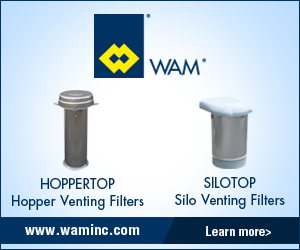


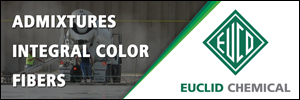
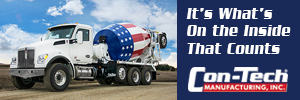
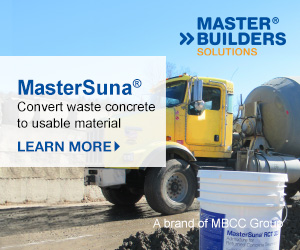
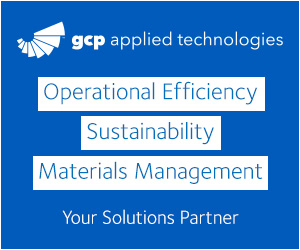

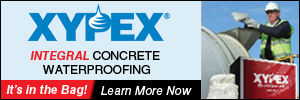
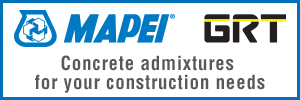

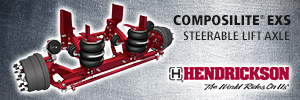

_Sept13.jpg)

